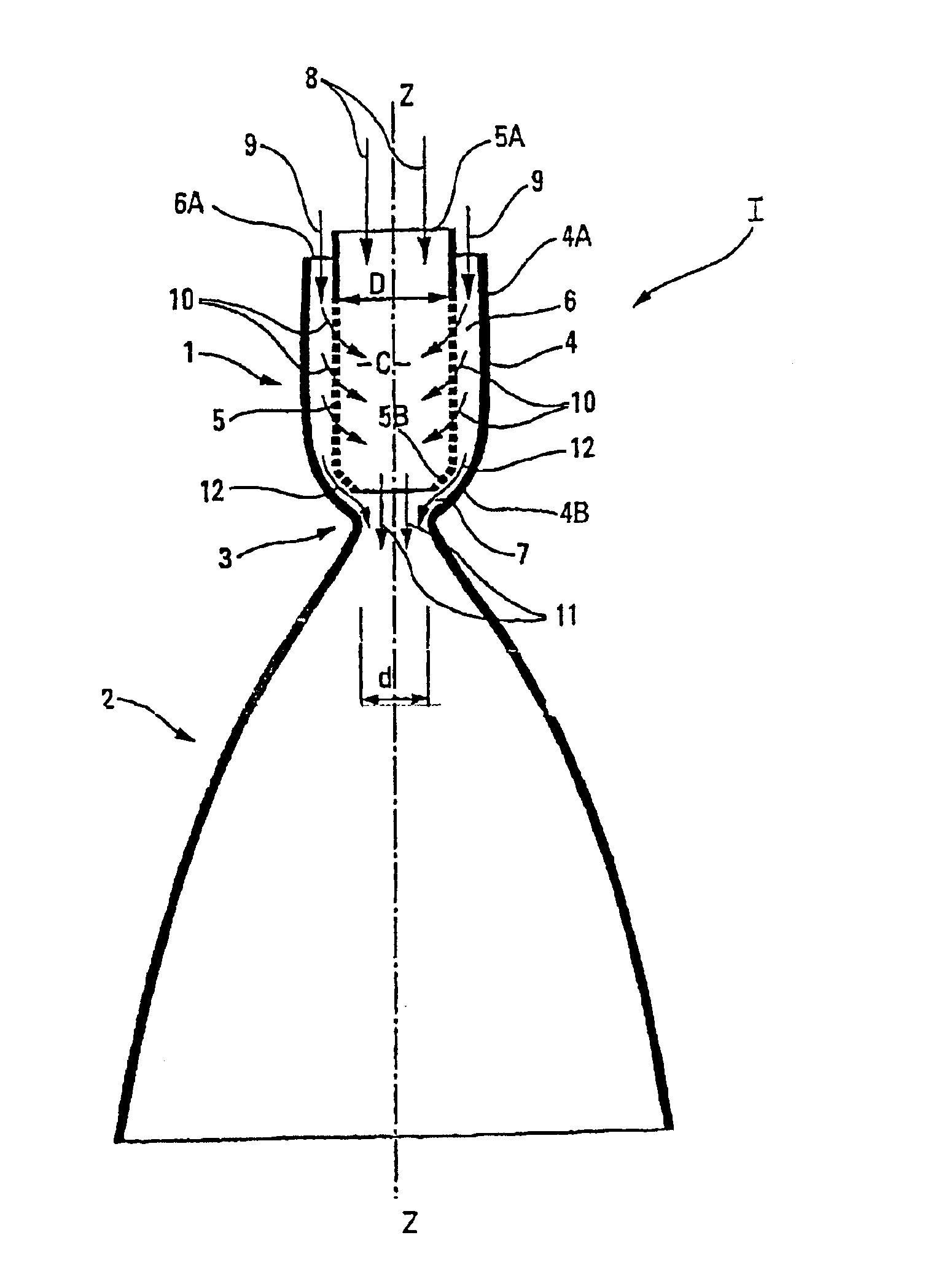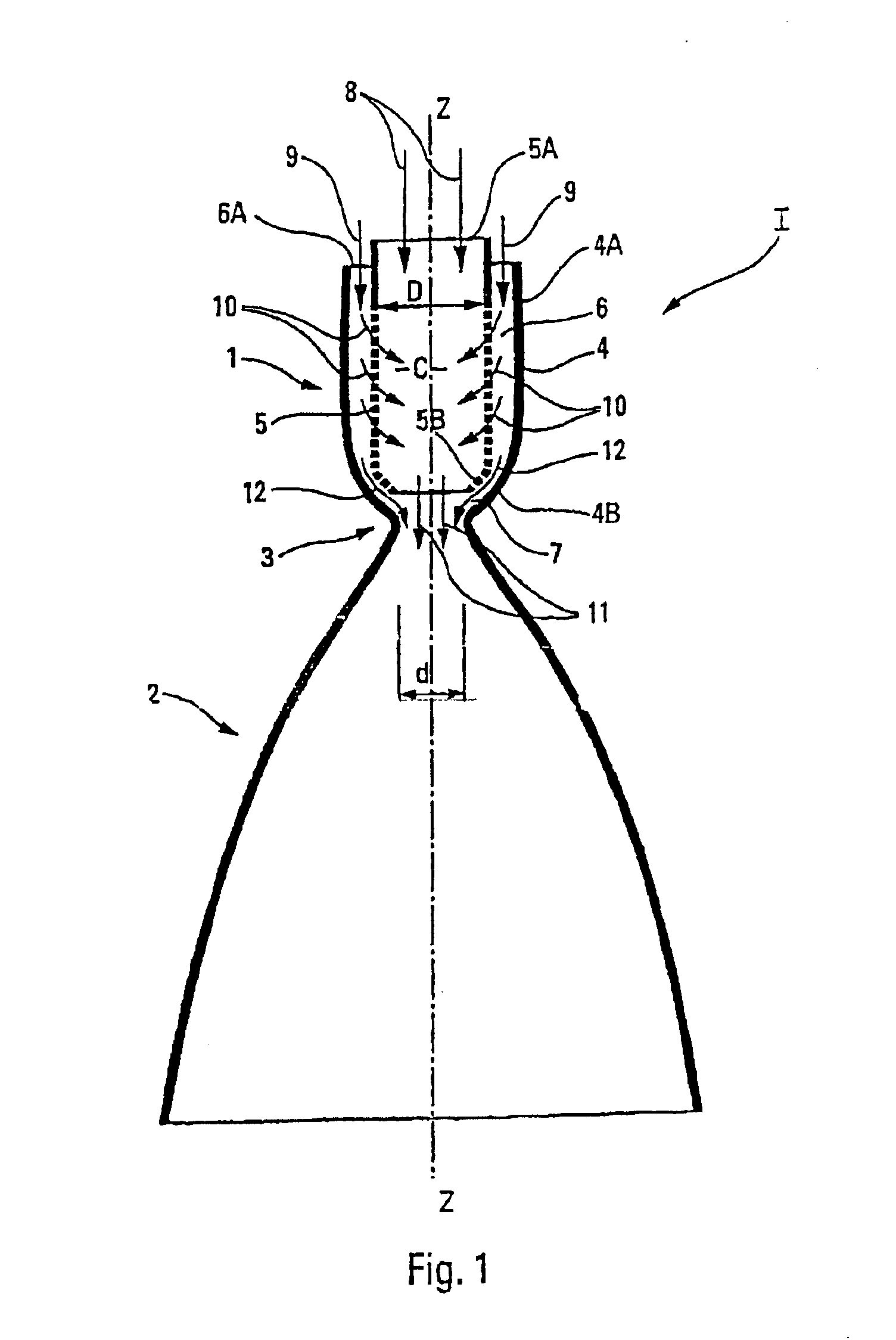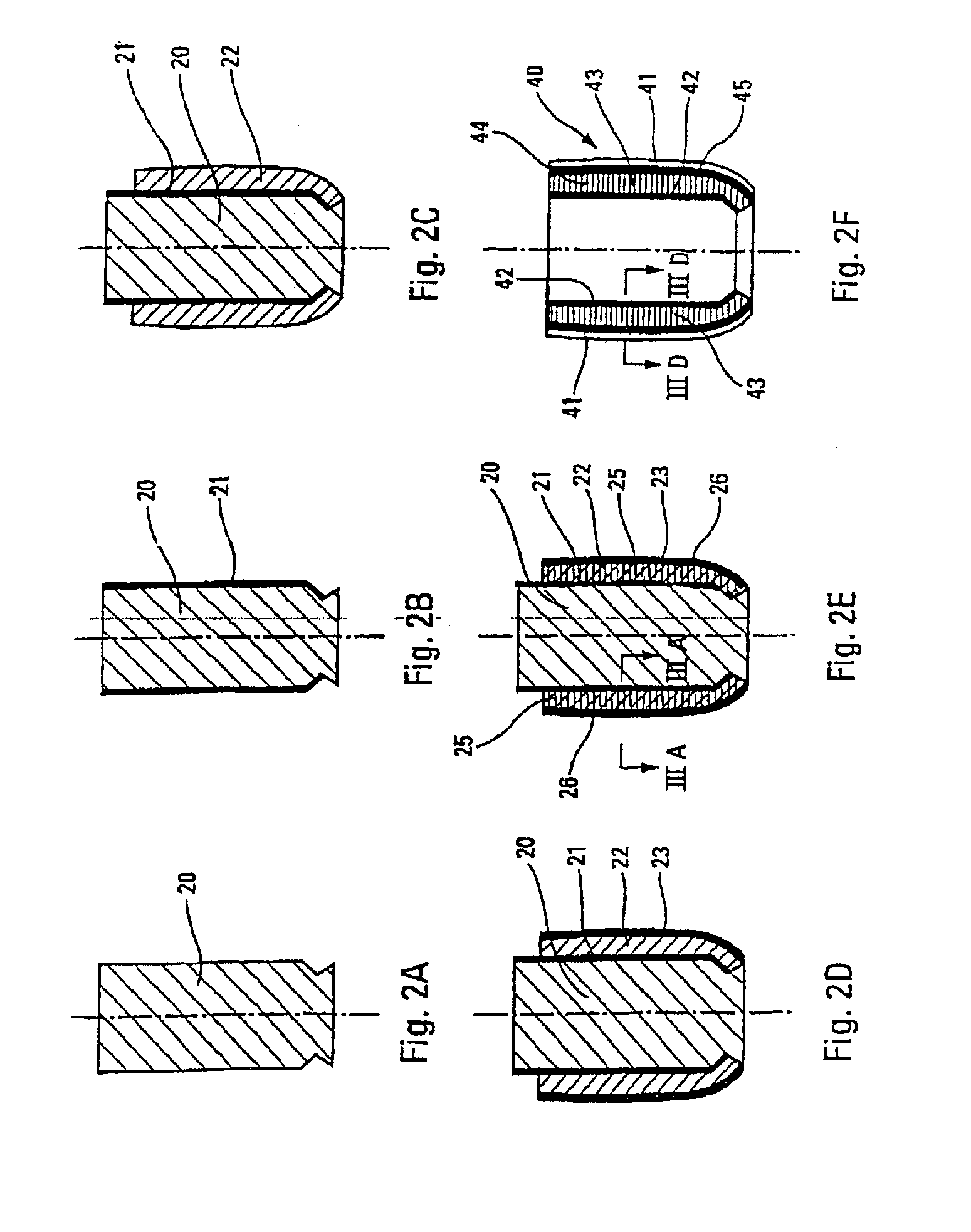Rocket Engine
a rocket engine and engine technology, applied in the field of rocket engines, can solve the problems of engine complexity, incongruity of walls, and complex fuel supply manifolds
- Summary
- Abstract
- Description
- Claims
- Application Information
AI Technical Summary
Benefits of technology
Problems solved by technology
Method used
Image
Examples
Embodiment Construction
[0038]The exemplary embodiment of the rocket engine I, according to the present invention and depicted schematically in FIG. 1, comprises a combustion chamber 1 and a divergent nozzle 2 connected to one another by a throat 3. The longitudinal axis of the engine I bears the reference Z—Z.
[0039]The combustion chamber 1 comprises an outer wall 4, of which the part 4A, opposite the nozzle 2, is roughly cylindrical, whereas the part 4B of the outer wall 4, arranged at the same end as said nozzle 2, is convergent to connect with the throat 3. Thus, the outer wall 4, the throat 3 and the nozzle 2 are in continuity and able to constitute a single piece.
[0040]The combustion chamber 1 additionally comprises a porous inner wall 5, the axis of which is coincident with the axis Z—Z and which is arranged inside the outer wall 4, forming with the latter a cylindrical intermediate space of annular cross section 6. The porous inner wall 5 is also roughly cylindrical, and its diameter D is greater th...
PUM
 Login to View More
Login to View More Abstract
Description
Claims
Application Information
 Login to View More
Login to View More - R&D
- Intellectual Property
- Life Sciences
- Materials
- Tech Scout
- Unparalleled Data Quality
- Higher Quality Content
- 60% Fewer Hallucinations
Browse by: Latest US Patents, China's latest patents, Technical Efficacy Thesaurus, Application Domain, Technology Topic, Popular Technical Reports.
© 2025 PatSnap. All rights reserved.Legal|Privacy policy|Modern Slavery Act Transparency Statement|Sitemap|About US| Contact US: help@patsnap.com



